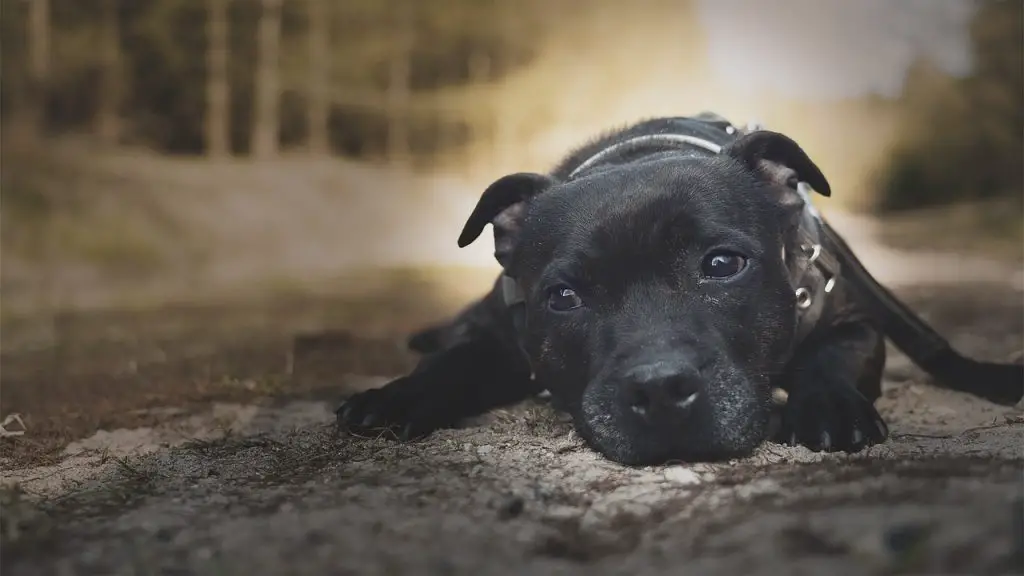If your dog is vomiting yellow bile and not eating, it’s a symptom that dog owners should never ignore.
While an occasional episode may not be cause for panic, persistent vomiting of bile paired with loss of appetite is often a serious sign.
Dog Vomiting Yellow Bile and Not Eating: Why It Happens
A dog vomiting yellow bile and not eating is commonly caused by empty stomach syndrome, gastrointestinal inflammation, pancreatitis, or bile reflux, but it can also stem from more serious concerns such as liver disease, blockages, or infections.
These causes often disrupt the digestive process, leaving dogs nauseated and unwilling to eat.

Dog Vomiting Yellow Bile and Not Eating: Common Causes
1. Empty Stomach Syndrome (Bilious Vomiting Syndrome)
One of the most common reasons for a dog vomiting yellow bile and not eating is bilious vomiting syndrome.
This occurs when a dog’s stomach remains empty for too long, allowing digestive bile to accumulate and irritate the stomach lining.
This bile is typically yellow or greenish-yellow in color.
You might notice this happening early in the morning or late at night, especially in dogs fed only once a day.
The associated nausea can make your dog avoid food altogether.
Feeding smaller meals more frequently often helps resolve this issue, but repeated episodes warrant a vet visit.
Related: Dog vomiting and not eating (Causes and when to worry)
2. Bile Reflux or Gastrointestinal Irritation
Sometimes bile backs up into the stomach from the small intestine, leading to inflammation and discomfort.
This bile reflux can cause repeated vomiting of yellow fluid and appetite loss.
Dogs with bile reflux often look uncomfortable, drool more than usual, or lick their lips and floors due to nausea.
Gastrointestinal irritation from eating garbage, table scraps, or spoiled food can also lead to vomiting bile.
Dogs might eat something outside that upsets their stomach, resulting in a cycle of vomiting and not eating.
3. Pancreatitis
Pancreatitis is a serious condition that involves inflammation of the pancreas and can cause dogs to vomit bile, especially if their stomachs are empty.
Affected dogs often refuse food due to pain, and other symptoms may include lethargy, diarrhea, and abdominal tenderness.
This condition can be triggered by high-fat meals or underlying metabolic disorders.
It’s most common in middle-aged or older dogs, and small breeds like Miniature Schnauzers are particularly at risk.
Related: Dog vomiting white foam and not eating (Here’s why)
4. Liver or Gallbladder Disease
When the liver or gallbladder isn’t functioning properly, bile flow and digestion are disrupted.
Dogs may vomit yellow bile, especially in the early stages of liver disease.
They also tend to stop eating due to nausea and systemic effects of toxin buildup in the body.
You might also see signs like weight loss, jaundice (yellowing of gums or eyes), or increased thirst and urination.
Blood tests and ultrasound imaging are often necessary to diagnose these conditions accurately.
5. Intestinal Blockages or Infections
If your dog vomits yellow bile repeatedly and won’t eat, especially after trying to drink water or eat food, it could be due to an obstruction in the intestines.
Dogs often swallow foreign objects that can get lodged and prevent food from passing through.
Alternatively, bacterial or viral infections like parvovirus may also present with vomiting bile and a refusal to eat.
These conditions often come with additional symptoms like fever, diarrhea, or dehydration and need immediate veterinary care.
Related:Dog vomiting and not eating but drinking water (Explained)
What to Do If Your Dog is Vomiting Yellow Bile and Not Eating
If your dog vomits yellow bile once and resumes normal eating and behavior shortly afterward, it may not be cause for concern.
But if they refuse to eat and continue vomiting, follow these steps at home while monitoring them:
Withhold food for 8–12 hours, but continue to provide small amounts of water or ice chips to prevent dehydration.
After the stomach rests, offer bland, easily digestible food such as boiled chicken and rice in small portions.
Feed smaller meals more frequently throughout the day to avoid an empty stomach.
Avoid fatty treats, table scraps, or changes in diet, which can worsen digestive upset.
Keep your dog calm and rested in a quiet environment.
Do not give human medications like antacids or anti-nausea pills unless prescribed by your vet.
When to Call or Visit Your Vet
Contact your veterinarian promptly if your dog is vomiting yellow bile and not eating and:
Vomiting lasts more than 24 hours
Your dog becomes lethargic, weak, or shaky
There’s blood in the vomit or stool
Your dog refuses water or shows signs of dehydration
Abdominal bloating or obvious discomfort is present
They are a puppy, senior dog, or have existing health conditions
Delaying veterinary care in these situations can worsen your dog’s condition and lead to serious complications.
Key Takeaway
When your dog is vomiting yellow bile and not eating, it’s a clear message that something isn’t right.
While mild, one-time episodes may be manageable at home, persistent symptoms should not be overlooked.
Your dog’s refusal to eat is often their way of telling you they’re uncomfortable or in pain.
Trust your instincts, observe carefully, and seek veterinary help if symptoms persist.
With the right care and early action, most dogs bounce back to health—and back to happily wagging tails.
